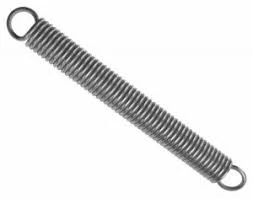
- Mobile Phone
- +8613931874955
- sales@cntcmetal.com
small conical compression springs
Understanding Small Conical Compression Springs
Small conical compression springs are essential components in various mechanical and industrial applications. Their unique tapered shape offers specific advantages over traditional cylindrical springs, making them a preferred choice in designs where space, force, and weight constraints are critical.
Design and Structure
The conical shape of these compression springs allows them to provide a linear increase in spring force as they are compressed. This is due to the varying diameter of the coils, which results in a denser structure at the larger end. Unlike cylindrical springs, which deliver a constant force over their range of compression, small conical springs can store energy efficiently while also allowing for a softer initial compression followed by increased resistance.
These springs are typically made from high-carbon steel, stainless steel, or even composite materials, ensuring durability and resistance to fatigue. The choice of material and precise manufacturing techniques contribute to their ability to withstand varying loads without permanent deformation.
Applications
The applications of small conical compression springs are numerous. In the automotive sector, they are commonly used in car suspensions, valves, and other critical systems where compact, reliable force is needed. In consumer electronics, these springs can be found in devices like switches and connectors, providing the tactile feedback essential for user interaction.
small conical compression springs

In medical devices, small conical compression springs play a vital role in ensuring the functionality of equipment that requires precision and responsiveness
. Their compact nature allows for more sophisticated designs that save valuable space without compromising performance.Advantages
One of the primary advantages of using small conical compression springs is their ability to accommodate limited space without sacrificing functionality. Their unique shape allows for a more compact design, which is beneficial in applications with stringent spatial constraints. Additionally, the nonlinear force characteristics provide designers with flexibility in tuning the spring’s performance to meet specific operational requirements.
Another significant benefit is the ease of integration into various systems. The conical design minimizes the potential for coil binding during operation, a common issue encountered with traditional cylindrical springs. This results in increased reliability and longevity of the spring in service.
Conclusion
In conclusion, small conical compression springs are vital components with diverse applications across multiple industries. Their design offers unique advantages in force generation, space efficiency, and reliability, making them an excellent choice for modern engineering challenges. As technology continues to evolve, the demand for these specialized springs is likely to grow, highlighting the importance of ongoing innovation in their design and application. Whether in automotive, consumer electronics, or medical devices, small conical compression springs remain an unsung hero of modern engineering.
share:
-
Why Sacrificial Formwork Is Redefining Underground ConstructionNewsJun.06,2025
-
The Structural Dynamics of Modern Concrete: How Snake Spacers Revolutionize Flexible ReinforcementNewsJun.06,2025
-
Snake Spacers Smart-Lock Concrete Reinforcement with Surgical PrecisionNewsJun.06,2025
-
Snake Spacers: Reinforcement Precision for Modern Concrete ProjectsNewsJun.06,2025
-
Snake Spacers Powering Concrete's Structural DNANewsJun.06,2025
-
Slither into Success: Snake Spacers' Precision Bite for Unbreakable ReinforcementNewsJun.06,2025
-
Sacrificial Formwork: Building Stronger, Faster, and Safer StructuresNewsJun.06,2025



















